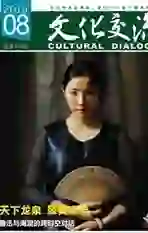文献影印:留住百年文化
2019-08-23李月红苗丽娜
李月红?苗丽娜
绍兴发起中国近代文献保护行动
遥想百年前,浙江人张元济凭一己之力,耗十余年之功,在海内外广罗善本,“求之坊肆,丐之藏家”,集千于一,主持编印了《四部丛刊》大型丛书。百年过去,文化昌盛。今天的绍兴人,要在全球范围内广泛搜集从1840年到1949年的中国近代文献,并重新整理影印,为子孙后代留下一代文化人、出版人的印迹。
由绍兴市倡议并实施的“中国近代文献保护工程”首批成果近日出炉。这是国内首个系统全面整理近代文献的大型文化工程。绍兴市为此专门成立项目工程推进小组,计划用10年至15年时间,在全球范围内广泛搜集从1840年到1949年的中国近代文献并重新整理影印,涉及文学、经济、政治、教育、艺术、史地、科技等各领域,呈现近百年来中外思潮激荡、启迪民族发展的全景交融。
因为这场盛事,几十位重量级学者和出版界人士近日齐聚绍兴,出谋划策。中国出版协会理事长柳斌杰说,他在绍兴感受特别强烈的就是当地人的文化自信。这个巨大的工程将为子孙后代留下一代文化人、出版人的印迹,为中华文化宝库再添珍宝。
确实,一个时代有一个时代的主题,一代人有一代人的使命。值得一提的是,在实施此次文化工程中,首次出现当地民营企业的身影。作为历史文化名城,绍兴以一市之力赓续中华优秀传统文化源流,从学界到政府,再到社会参与,越来越多的力量正在汇入、壮大。
百年珍贵文献,亟待搜集整理
今会稽山北麓的越城区,公元前490年,越王勾践迁都建城于此。千百年来,受吴越文化氤氲润泽,此地人文大家辈出,历史底蕴深厚。如今,坐落于该区会稽路上的浙江越生文化创意产业园,正是因此而得名。
我们带着好奇走进“越生文化”:一家民营企业,为何会主动承担这个重量级的文化工程?
浙江越生文化传媒集团,是绍兴当地一家以出版印刷、出版物数字交易平台、艺术品拍卖等为主的企业。走进文创园内,很难想象这是一家前身以印刷为主业的企业。公司负责人寿林芬直接将我们领进越生美术馆。
说是美术馆,其实更像是一个文献馆。敞亮的一楼展厅内,陈列着近代文化名人像——鲁迅、蔡元培、秋瑾等。展厅中央,展陈着各种珍稀版本的近代文献,有三联书店出版的《世界工人运动》,有时代画报出版的《史大林与文化》,有商务印书馆出版的《白银国有论》等,多达千种。它们均出版于上世纪一二十年代前后,纸页泛黄,有的甚至脱落散溃,岁月蚀痕一目了然。
展厅右侧是“中国近代文献保护工程”展区,我们看到了部分百年老书的今日模样。有小說,比如1917年出版、王理堂编著的《女学生》;有戏剧,比如1920年出版、大悲著的《北京学生联合会新剧团剧本》;有散文,比如1920年出版,田寿昌、宗白华、郭沫若著的《三叶集》。新书保留了老书的原味,大小、封面、内容均为影印出版,浓郁的时代风貌扑面而来。
众所周知,近代以来,我国出版业引入西方工艺,所采用的原料均为机械纸,其酸化极限不足百年,目前国内近代文献原典纸质酸化严重,导致国内大部分图书馆不再对外借阅这一时期的文献。更为严重的是,由于大量近代文献散落在海内外为数难以准确统计的图书馆内,至今没有一家文化机构拥有相对系统完整的中国近代文献资料。
同时,近年来,这段时期的历史研究逐渐进入学界视野。“这个时期中外古今的知识交汇,产生了大量记载中华民族独立光辉的文献,记载了马克思主义在中国的传播和中国共产党人的奋斗历程。”国家图书馆原馆长周和平在接受采访时表示,研读近代文献资料,可以让我们更好地理解当下的中国,思考中国的未来。
“上演‘三千年未有之变局的中国近代史,是中华文明从传统向现代转型的大时代。这其中奔走呼号的学者有很多为绍兴籍,今天我们理应接过‘接力棒,继承先贤未竟之志。”为此,绍兴市专门成立项目工程推进小组,这在绍兴文化建设史上尚属首次。
至此,多方力量汇集。政府引导、“越生”牵头,由国内多领域近代文献权威学者领衔,以及近百家图书馆参与的“中国近代文献保护工程”正式启动,计划用10年至15年时间,在全球范围内广泛搜集从1840年到1949年的中国近代文献并重新整理影印出版,填补这个文化保护的“缺口”。
历时十年,采集12万余种图书
“文学卷已采集4.3万种,经济卷已采集1.6万种,艺术卷已采集2800种,教育卷已采集2.9万种,历史地理类已采集2.5万种,从中精选可出版1万余册。”这是“中国近代文献保护工程”的初步出版总量。
据了解,文学卷的诗歌、散文、小说、戏剧的首编已出版数百余种;教育、艺术、经济等各卷的首编将于今年下半年陆续出版。
“从目前文学卷的出版情况来看,至少有一半的品种是以前没看到过原书的,有三分之一是只知道有书但从未看到过书的。”华东师范大学中文系教授、博士生导师陈子善告诉我们,以刘廷芳的诗集《山雨》为例,当年这本书收录进“风满楼丛书”第三种,但丛书中的第一、二种散佚多年,此次文学卷收录刘廷蔚的《山花》,正是当年丛书的第二种,能寻得此书实属不易。
“历经千辛万苦,说尽千言万语,走遍千山万水,想尽千方百计。”回想多年来的寻书经历,寿林芬连用了4个成语。以一家民营企业之力,承载这样浩大的文化工程,其难度可想而知。
前些年,得知哈佛大学藏有大量近代文献,团队赶赴美国向对方申请查阅文献数据资料。由于事前缺乏充分沟通,在等待5天后,双方才开始正式交流。同样,在国内某图书馆,寿林芬第一次带领团队走进去时,对方只听了5分钟就走掉了。寿林芬很无奈,在学术界看来,民企做如此浩大的文化工程,这简直是天方夜谭。
“多亏了张元济先生的《四部丛刊》,成了我们最好的‘外交书。”寿林芬说。张元济编著的《四部丛刊》全本存世极少,今人想一睹其全貌非常困难。前些年,“越生文化”联合高等教育出版社,集国内多家图书馆所藏版本,历时数年,影印出版《四部丛刊》,获得学术界普遍认可。也正是这套重达1吨多的典籍,相继打开了哈佛大学、北大、上海等多家图书馆的文献库房。
“越生文化”的努力得到国内相关领域权威学者的支持。在工程启动之初,北京大学博雅讲席教授、原中文系主任、20世纪中国文化研究中心主任陈平原应邀担纲文学卷编委会主任一职。在他看来,史料是学术之本,没有相对完善的资料积累,学界很难展开深入研究。陈平原认为工程如能顺利完成,则嘉惠学界、功德无量。著名经济学家顾海良教授全力支持经济卷的编纂工作,召集10余位青年学者参与选目工作。如今,已有近百位全国著名学者相继加入“中国近代文献保护工程”。
“中国近代文献保护工程”资料收集的难度较大,版本甄选复杂。以严复的《天演论》为例,版本虽然很多,但没有几家图书馆有《天演论》的初版本。对此,专家形成共识,以收录初版和经典版本为主,以全面精准呈现文献的时代风貌。
青灯黄卷不复在,皓首穷经常有时。文献整理需要持久的耐心和耐力。寿林芬介绍说,从目前的摸底情况来看,收录文献品种可能大大超过预期总量。随着越来越多的文献资料得到有效收集,出版工程总量必将随之增大,这无疑也是一个巨大的考验。
三条产品线,留存百年汗青
“整理文献,最终是要解决藏与用的难题。”在“越生文化”,我们看到的保护工程计划,不仅仅是影印出版近代文献。
按照规划,工程推出3条产品线:第一条是影印出版。根据整理类编的进展,边整理边出版。第二条是数字化转换。开发近代文献数据库及多种形态的阅读产品,并以此为基础,打造数字出版物交易平台。第三条是出版百种“大家小书”经典阅读书系。首批从近代文献中挑选100位浙江近代学者的著作,其中绍兴有30位,由国内相关领域权威学者撰写面向大众的通俗读物。
这意味着,深藏库房多年的中国近代文献纸书将集体走进互联网时代。
6月初,一项由“越生文化”牵头,名为“中国百强名社数字出版物交易阅读平台”的项目落地越城区。据了解,这一项目注册资金达到1亿元,其中越城区政府以文化产业基金方式出资2000万元作为初始投入,同时引进社会资源共同开发建设。
以近代文献保护工程为基础资源,平台建成后,将设越生文献数字资源产品、出版社电子新书、精品数据库3块主营业务,提供纸电一体化供应、数据库交易、线上线下互动等一站式在线阅读服务。
“平台在今年底上线之后,将有效整合各出版社、图书馆等资源,为线上交易、版权服务提供保障,打造互联网上的高校图书馆、公共图书馆。”浙江越生文化传媒集团副董事长钱周铭介绍说,平台建成完善之后,将以手机客户端和家庭电视屏幕为终端进行推送,为数以亿计的家庭建立起“智慧书房”,让优质的阅读资源進入千家万户。
绍兴是全国首批历史文化名城,从古代到近代直至改革开放以来,以其强大的文化影响力为世人瞩目。据不完全统计,仅绍兴籍历代名家就多达300多人。如何做好传统文化的保护、传承和开发,既是彰显一座城市文化担当的时代使命,也是考验一座城市如何将文化软实力转变成发展硬动能的前沿课题。实施“中国近代文献保护工程”,无疑是一次破题。
遥想百年前,浙江人张元济凭一己之力,耗十余年之功,在海内外广罗善本,“求之坊肆,丐之藏家”,集千于一,主持编印了《四部丛刊》大型丛书。百年过去,文化昌盛。今天,借由一座城市的文化自觉和现代技术的突飞猛进,无数老书得以化一为千,在二进制的世界里永生,为后世永远定格这段文明交融生辉的文化历史。
Shaoxing Initiates Chinese Contemporary Literature Protection Program
By Li Yuehong, Miao Lina
The birth of Sibu Congkan (The Four Branches of Literature Collection), a collection of authoritative editions of 504 Chinese original and historical monographs published by the Commercial Press in from 1919 to 1936, set a milestone in the publishing history of China.
Behind the unsurpassable quality of the project was the great foresight and more than a decades dedication of Zhang Yuanji (1867-1959), an eminent scholar from Zhejiang Province. For almost 100 years, Zhangs Sibu Congkan remained the paragon encyclopedia of Chinese classics for its supreme editorial quality.
Today, a reprint collection of Chinese books printed in years from 1840 to 1949 has been born.
The first one of its kind in China, this ambitious project is planned to take 10 to 15 years to complete. Zhejiang Yuesheng Culture and Media Group is the mastermind and full-time executor of the project. A special team, commissioned by the local government and led by a dozen heavyweight scholars and publishers, will reach out to the global resources to put together a full collection of works representing the interaction of different trends of thought covering all kinds of fields in China and other countries.
It is also the first time such a mega-size cultural project to have drawn proactive involvement of private enterprises, which also shows the uniquely strong participation from all social sectors in cultural promotion undertakings.
For more than a thousand years, present-day Yuecheng District of Shaoxing produced a galaxy of notable and erudite people. At a gallery of Zhejiang Yuesheng Culture and Media, based in the Yuesheng Culture Innovation Park located on Kuaiji Road in this culture-drenched part of Shaoxing, time seems to have frozen in the museum-like preservation of cultural artifacts and literature. Standing in front of the shelves filled to the brim with a dazzling variety of reprinted editions of extremely rare and antique classical books from that period of China, visitors will be filled with excitement and an overpowering yearning to meet the key undertaker of such a formidable cultural project.
Starting from a card printing business, the Shaoxing-based Yuesheng Culture and Media Group worked its way up the ladder into the printing and packaging field towards the end of the 1990s. Shou Linfen, the steerswoman, felt an urgent need to reshape the company in the new industrial context of the 1990s.
The strategy of the reloaded Zhejiang Yuesheng (the company name literally meaning “born in Shaoxing”) is clear: to continue the legacy of publishing the best and rarest works that appeal to the worlds most prestigious libraries and museums. Shou considers the classics reprints a renaissance project. The waning print media in todays digitalized China may be a saddening reality for many, but Shou sees it an opportunity to make the company a trailblazer in the reprinting and publishing sector, preserving the cultural quintessence of China through a global vision.
The companys new cultural mechanism took shape. After going boldly for years down a “revolutionary road”, the vision of Shou Linfen and her team is strong enough to lead the company into a new realm that interacts bravely with the global cultural database.
The first stage of the project has borne beautiful fruit: a select collection of about 10,000 volumes of literature covering economy, arts, education, history and geography. The first stage also saw the publishing of more than 100 works of poetry, essays, novels and dramas, with the first print of many others scheduled to complete in the second half of 2019.
“It is also the first time people today have the chance to admire at least half of the works in the ‘Literature category,” shares Chen Zishan, a professor at East China Normal University.
“It was an arduous journey over hale and dale and against innumerous trials and hardships,” recalls Shou Linfen about all the difficulties the company has encountered in the implementation of such a massive project. “More often than not, our persuasion aiming to solicit collaboration with other libraries in China barely started before it fizzled out, because of serious lack of awareness about what we strived to achieve, and we had to wait for five days before the representatives from the library of Harvard University finally agreed to sit down and talk to us,” recalls Shou Linfen.
“Luckily, we have our Sibu Congkan as the best diplomatic solution. It finally found its way into the worlds most prestigious libraries in and outside China.”
For the later generations of booklovers, the inaccessibility of a database as rare as Sibu Congkan is dismaying. Due to rarity, the existing editions of many classical Chinese books are so treasured by libraries that they stay on bookshelves not available to the public, which led the Shaoxing company to think seriously about new ways of book conservation as well as the possibility of bringing the huge treasure trove, laying unshared, to light.
One of the ideas is to digitalize, which means many rare books collecting dust in library storage rooms will be brought into the Internet world and shared by a global audience. In June 2019, Yuesheng Culture launched a new trading and viewing online platform designed for digitally published products from Chinas most prestigious publishers.
In a broader sense, the ambition and practice of Zhejiang Yuesheng Culture and Media is a living proof of how a culturally distinct city is innovating to transform its cultural riches into “soft power”.
